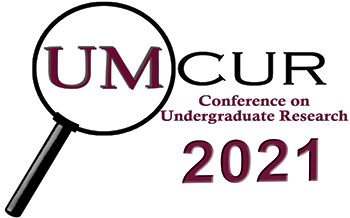Project Type
Presentation
Faculty Mentor’s Full Name
Cara R Nelson
Faculty Mentor’s Department
Ecosystem Science and Restoration
Abstract / Artist's Statement
The use of reference models in ecological restoration is imperative to determining the degree of success in restoring a degraded ecosystem. A reference model represents what condition the project ecosystem would be in had degradation not occurred. Oftentimes restoration projects use a single reference site, or limited variables to guide their questions and project goals. When restoration projects are designed around limited reference sites or variables, they may fail to adequately capture ecosystem complexity. The use of a broad set of variables and reference sites allows a reference model to incorporate a wider range of spatial and temporal variability inherent in ecosystems. The heterogeneity of riparian ecosystems makes it important to encompass a variety of variables as well as multiple reference sites in order to illustrate the natural variability that occurs in these disturbance-dependent ecosystems. This study aims to build an empirical reference model based on multiple reference sites and a suite of variables representing the three components of ecological measurement: structure, composition, and function. This model will be for Rattlesnake Creek in Missoula, MT, where a small municipal dam was recently removed. Data will be collected from fifteen reference sites, as well as from the project site on Rattlesnake Creek during summer and fall of 2021, and spring 2022. This study focuses on the terrestrial characteristics of riparian ecosystems, while a companion study will evaluate in-stream variables. In addition, power analyses will be conducted to determine the precision of the reference model, as well the number of reference sites that would need to be sampled to achieve the desired level of precision. The results from this study will contribute to the evaluation of restoration success on Rattlesnake Creek as well as guide future development of reference models for dam removals or other riparian restoration projects throughout the western US.
Category
Life Sciences
Reference Models for Riparian Restoration after Dam Removal: the case of Rattlesnake Creek
The use of reference models in ecological restoration is imperative to determining the degree of success in restoring a degraded ecosystem. A reference model represents what condition the project ecosystem would be in had degradation not occurred. Oftentimes restoration projects use a single reference site, or limited variables to guide their questions and project goals. When restoration projects are designed around limited reference sites or variables, they may fail to adequately capture ecosystem complexity. The use of a broad set of variables and reference sites allows a reference model to incorporate a wider range of spatial and temporal variability inherent in ecosystems. The heterogeneity of riparian ecosystems makes it important to encompass a variety of variables as well as multiple reference sites in order to illustrate the natural variability that occurs in these disturbance-dependent ecosystems. This study aims to build an empirical reference model based on multiple reference sites and a suite of variables representing the three components of ecological measurement: structure, composition, and function. This model will be for Rattlesnake Creek in Missoula, MT, where a small municipal dam was recently removed. Data will be collected from fifteen reference sites, as well as from the project site on Rattlesnake Creek during summer and fall of 2021, and spring 2022. This study focuses on the terrestrial characteristics of riparian ecosystems, while a companion study will evaluate in-stream variables. In addition, power analyses will be conducted to determine the precision of the reference model, as well the number of reference sites that would need to be sampled to achieve the desired level of precision. The results from this study will contribute to the evaluation of restoration success on Rattlesnake Creek as well as guide future development of reference models for dam removals or other riparian restoration projects throughout the western US.
